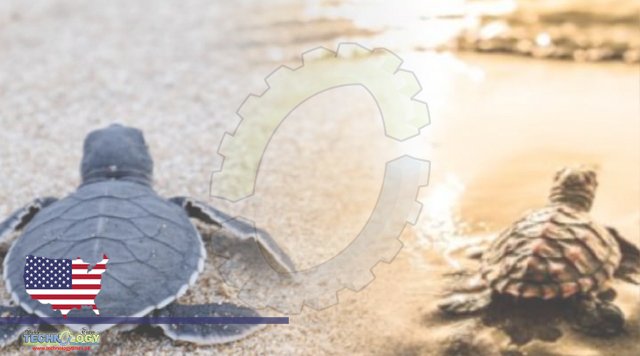Turtles Never Make It to The Sea, Playing with my children on a beach on Hatteras Island, a barrier island off the coast of North Carolina, I struck up a conversation with a man walking his dog.

We were standing next to a turtle nest, which the National Park Service had roped off with a sign stating that the spot was federally protected. “Wouldn’t it be nice to know exactly when the baby sea turtles will come out?” I mused. He smiled and said, “Well, we’re working on that.” That conversation generated a partnership to develop TurtleSense, a novel, inexpensive way to monitor turtle nest activity remotely. In a newly published study, we describe how it works. Participants included Eric Kaplan, the man I met on the beach and the founder of the Hatteras Island Ocean Center; David Hermeyer and Samuel Wantman, retired engineers at the San Francisco nonprofit Nerds Without Borders; IBM master inventor Thomas Zimmerman; and veterinary student Joshua Chamberlin. As a developmental neuroscientist, Turtles Never Make It to The Sea, I worked to understand how the baby turtles might use motion or vibrations to coordinate nest activity. Humans can best protect sea turtle hatchlings as they make their way from the beach to the sea if they know precisely when the baby turtles will appear. But predicting emergence has been difficult. We found that by placing a simple sensor disguised as a turtle egg in the nest, we could detect activity in the nest that indicated when the baby turtles would emerge from the sand and swarm toward the water.
Sea turtles spend their lives in the ocean, except when females come ashore a few times each summer to lay their eggs. Once they lay their eggs and bury them in the sand, they return to the water. Turtles Never Make It to The Sea, The eggs incubate beneath the sand for several weeks. Then the hatchlings erupt up out of the sand, usually as a massive sibling group, and scramble toward the surf. This journey is a highly vulnerable moment in a sea turtle’s life. Hatchlings must avoid beach debris, as well as birds and crabs waiting to prey on them. They also may become disoriented because of light pollution from beach houses and hotels and fail to reach the water, dying of dehydration on the sand. All six species of sea turtles found in the US are protected under the Endangered Species Act, so beach communities are required to ensure that baby turtles receive proper protection – including on their journey to the water. Scientists typically guess at emergence dates based on the amount of time that has passed since the nest was laid. If the nest is in a populated area, volunteers may monitor it from dusk until midnight during the window when the hatchlings might emerge. But this can be as long as two weeks, which requires a lot of volunteer hours.
Source: This news is oriignally publihsed by sciencealert